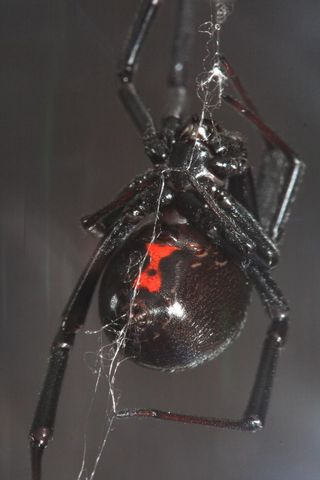Media
"Black Widows" and Other Female Serial Killers
Some women kill repeatedly for revenge, profit or pleasure.
Posted November 23, 2015

The entertainment media have created a very distorted image of female serial killers. They have popularized a one-dimensional, fictionalized stereotype of female serial killers as the "Black Widow." The black widow serial killer is a woman who murders three or more husbands or lovers for financial or material gain over the course of her criminal career.
The black widow killer was featured in the 1944 classic dark comedy film Arsenic and Old Lace starring Cary Grant. This highly popular film tells the fictional tale of two sisters who murder elderly gentlemen by serving them elderberry wine laced with arsenic.
Although they comprise less than twenty percent of the total, female serial killers are very real and just as deadly as males. However, they are not all of the black widow variety. What they do have in common is that they typically use quieter and less messy methods to kill than their male counterparts. The methods they use for murder are more covert or low-profile such as murder by poisoning which was the preferred choice or modus operandi of female serial killers interviewed in a 2006 research study (1). Other methods of murder that were also identified in the study include shooting, stabbing, suffocation and drowning.
Many female serial killers are involved in theft, fraud or embezzlement prior to becoming murderers due to their interest in material things (2). Although the majority of female serial killers murder for money or other profit some do it for the attention and sympathy they receive following the death of someone they cared for.
It is not uncommon for female serial killers to be employed as caretakers in nursing homes for the elderly. Female serial killers generally operate in a specific place that they know well such as their home or a health care facility where they are employed. They rarely go trolling for victims out in the open as male serial killers often do, but rather find victims in their family or workplace. As it applies to popular mythology, the news and entertainment media focus on and sensationalize the acts of violence and torture perpetrated by male serial killers.
The gory tales of atrocity committed by men provide enticing entertainment content to the public. The shocking and stereotypical depictions of male serial killers serve a large consumer market, so their sensationalized stories are good for business profits. At the same time, however, media distortions do a disservice to the public. Although the graphic images of male serial killers sell countless books and movie tickets, they also perpetuate the myth that all serial killers are demented men.
Perhaps the most infamous female serial killer in U.S. history is Aileen Wuornos, a highway prostitute who killed seven men in Florida during 1989 and 1990. She is a unique exception to the typical profile of female serial killers. She was not a black widow. Wuornos killed outdoors instead of at home, killed strangers instead of friends or family and killed for personal gratification and her own sense of justice.
Wuornos was driven to kill men out of rage and a desire for vengeance. She sought retaliation for a lifetime of rape and beatings by men, so she killed “Johns” or clients that picked her up along Florida highways. She used a gun to kill her male victims which is atypical of a female serial killer.
Following her conviction, Wuornos was sentenced to death and she was executed by lethal injection in 2002. She rose to infamy after the release of the 2003 blockbuster Hollywood film Monster in which she was played to great critical acclaim by Charlize Theron.
Prior to Aileen Wuornos, the term "female serial killer" was generally considered to be an oxymoron, even among law enforcement authorities, despite numerous well documented incidents of female serial killers throughout history. The lack of public awareness of female serial killers prior to Aileen Wuornos is due to earlier stereotypical depictions of deranged male serial murderers in the news and entertainment media.
Prior to Wuornos, the mass media almost always depicted a serial perpetrator as a man, largely due to the erroneous and paternalistic societal notion that women could not commit such crimes. Wuornos rose to infamy because she was atypical of female serial killers. Ironically, she became a celebrity monster because she killed like a man.
Unlike the rarely discussed, real-life black widow killers throughout history, Wuornos became a contemporary popular culture icon because she defied gender stereotypes and acted like a female version of the notorious outlaw Jesse James.
I examine the public’s intense fascination with notorious and deadly serial killers, including David Berkowitz (“Son of Sam”) and Dennis Rader (“Bind, Torture, Kill”) with whom I personally corresponded, in my book Why We Love Serial Killers: The Curious Appeal of the World’s Most Savage Murderers.
Dr. Scott Bonn is a criminologist, TV analyst, professor and best-selling author. Follow him @DocBonn on Twitter and visit DocBonn.com
References
1)Frei, A., Völlm, B., Graf, M. and Dittmann, V. 2006. “Female serial killing: Review and case report.” Criminal Behaviour and Mental Health, 16 (3), pp. 167-176.
2)Ibid.




